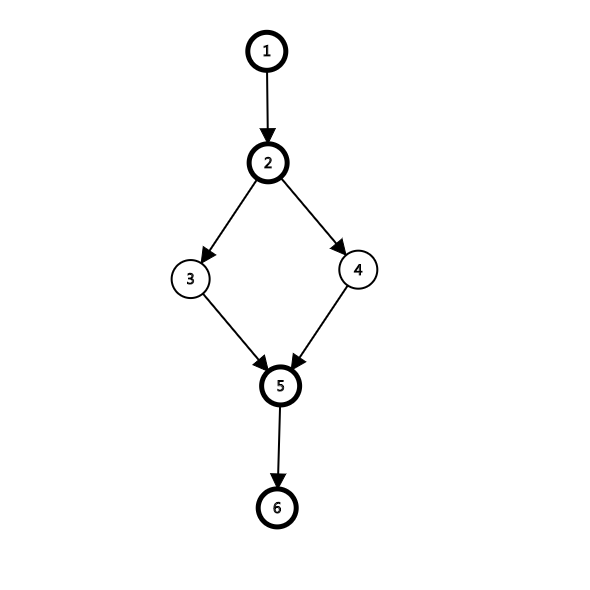[Acwing 164. 可达性统计] 题解报告
作者:互联网
事实上,这道题并不需要拓扑排序。(当然,拓扑排序还是更快)
-
题目分析
首先,题目中说了,这是一个有向无环图,所以,我们可以考虑 \(\texttt{DP}\) / 记搜 / 拓扑排序 来解决这道题。
(我的做法是记忆化搜索。 -
雷区分析
刚开始我用 \(f[i]\) 表示从 \(i\) 出发能够到达的点的个数,利用记忆化搜索更新状态。
\(f[i] = f[枚举所有出边] + 1\)
代码如下:
#include <iostream>
#include <cstring>
#include <cstdio>
#include <algorithm>
using namespace std;
const int N = 30010;
int f[N];
int n, m;
int h[N], e[N], ne[N], idx;
void add(int a, int b)
{
e[ ++ idx] = b, ne[idx] = h[a], h[a] = idx;
}
void dfs(int u)
{
if (f[u]) return;
int s = 1;
for (int i = h[u]; i; i = ne[i])
{
int j = e[i];
dfs(j);
s += f[j];
}
f[u] += s;
}
int main()
{
scanf("%d%d", &n, &m);
for (int i = 1, x, y; i <= m; i ++ )
scanf("%d%d", &x, &y), add(x, y);
for (int i = 1; i <= n; i ++ )
if (!f[i])
dfs(i);
for (int i = 1; i <= n; i ++ )
printf("%d\n", f[i]);
return 0;
}
然鹅,我们没有考虑到一种情况,如图:

如果按照刚才上面的做法,那么 \(5, 6\) 号节点就会被统计两次,造成结果偏大。
所以,我们需要记录一下每个出点可到点的并集,这可以用 \(bitset\) 来实现
-
\(bitset\) 用法
- \(bitset\) 可以实现二进制运算的
|, ^, &等操作。 - \(bitset.any()\) 返回 \(bitset\) 中是否有 \(1\)
- \(bitset.none()\) 返回 \(bitset\) 中是否全为 \(0\)
- \(bitset\) 可以实现二进制运算的
-
\(\texttt{Code}\)
#include <iostream>
#include <cstring>
#include <cstdio>
#include <algorithm>
#include <bitset>
using namespace std;
const int N = 30010;
int n, m;
int h[N], e[N], ne[N], idx;
bitset<N> f[N];
void add(int a, int b)
{
e[ ++ idx] = b, ne[idx] = h[a], h[a] = idx;
}
void dfs(int u)
{
if (f[u].any()) return;
f[u][u] = 1;
bitset<N> s;
for (int i = h[u]; i; i = ne[i])
{
int j = e[i];
dfs(j);
s |= f[j];
}
f[u] |= s;
}
int main()
{
scanf("%d%d", &n, &m);
while (m -- )
{
int a, b;
scanf("%d%d", &a, &b);
add(a, b);
}
for (int i = 1; i <= n; i ++ )
if (f[i].none())
dfs(i);
for (int i = 1; i <= n; i ++ )
printf("%d\n", f[i].count());
return 0;
}
标签:idx,int,题解,void,ne,bitset,164,include,可达性 来源: https://www.cnblogs.com/LcyRegister/p/16185368.html